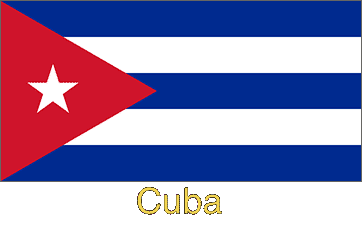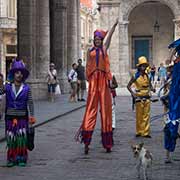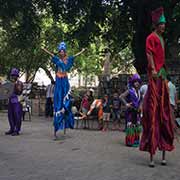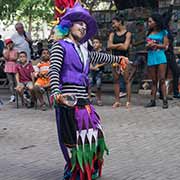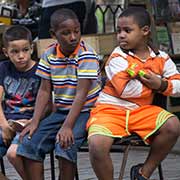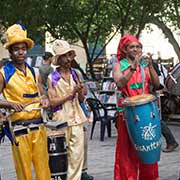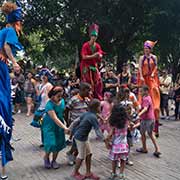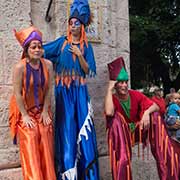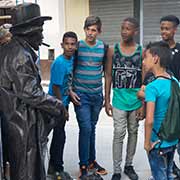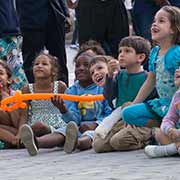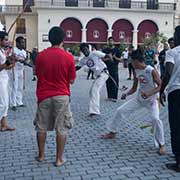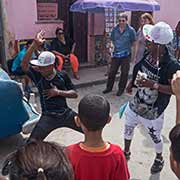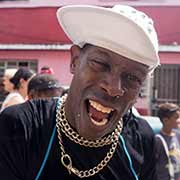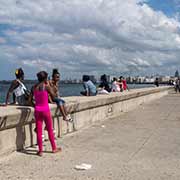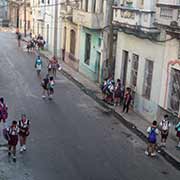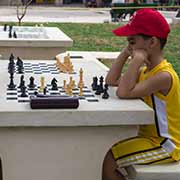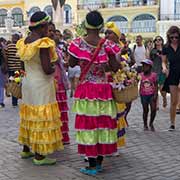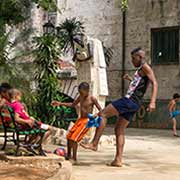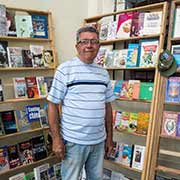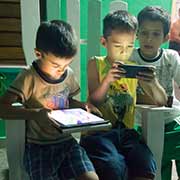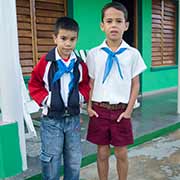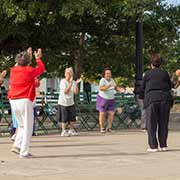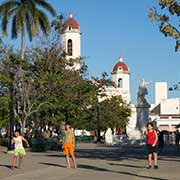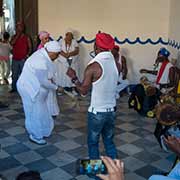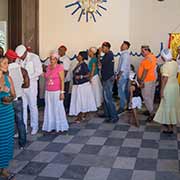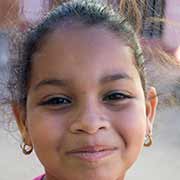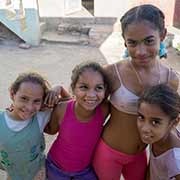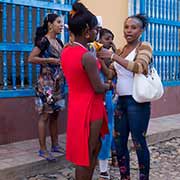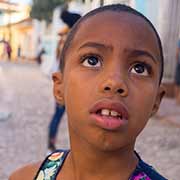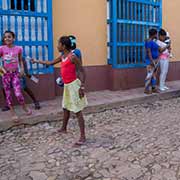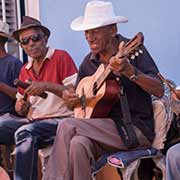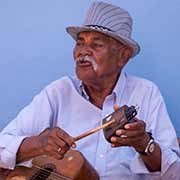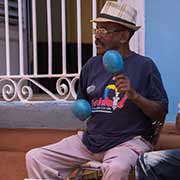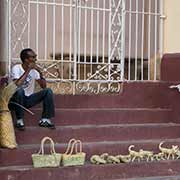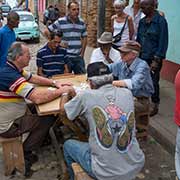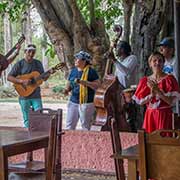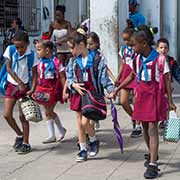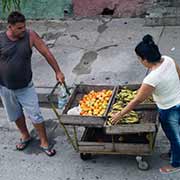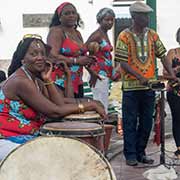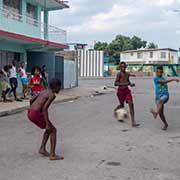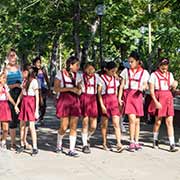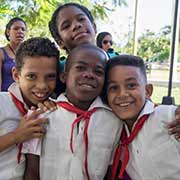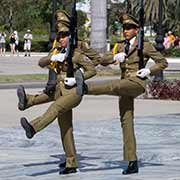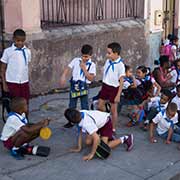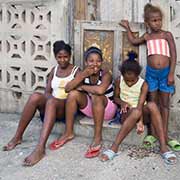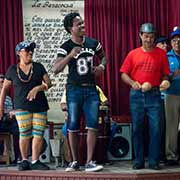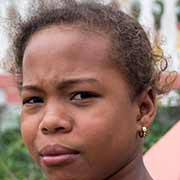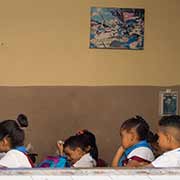Photos of The People and Culture of Cuba, Cuba
The People and Culture of Cuba
Cuba’s population of over 11 million is very mixed because of its colonial history. The native American population was supplanted mainly by Spanish, imported African slaves and later Asians (primarily Chinese), with widespread intermarriage between the various groups. Consequently, it is almost impossible to determine percentages of people of different lineages, but this doesn’t matter in a country like Cuba, as can be seen in these photos.
you may then send it as a postcard if you wish.
Havana has lively street theatre scenes, with stilt walkers, music, children’s puppet shows and demonstrations of Brazilian martial arts on the various squares in the city. A shrine to Afro-Cuban religions is in Callejón de Hamel; Rumba groups play here every Sunday. Although many Afro Cubans adhere to the Catholic faith, it is often practised with Santería. This Afro-American religion developed here among the descendants of slaves brought from West Africa. Its sacred language is Lucumí, a creolised remnant of the Yoruba language, a West African language spoken mainly in Nigeria and Benin. There are regular ceremonies, like in the Casa Templo de Santería Yemayá in Trinidad.
Music is everywhere, on the street, in cafés and roadside restaurants. Santiago de Cuba is considered where African rhythm first encountered Spanish tradition to produce the island’s inimitable music. It has numerous music halls, with the “Casa de la Trova” the first and most famous. Trova halls are now in most Cuban cities, like the Casa de Trova in Baracoa, where local musicians perform daily for an appreciative audience.


